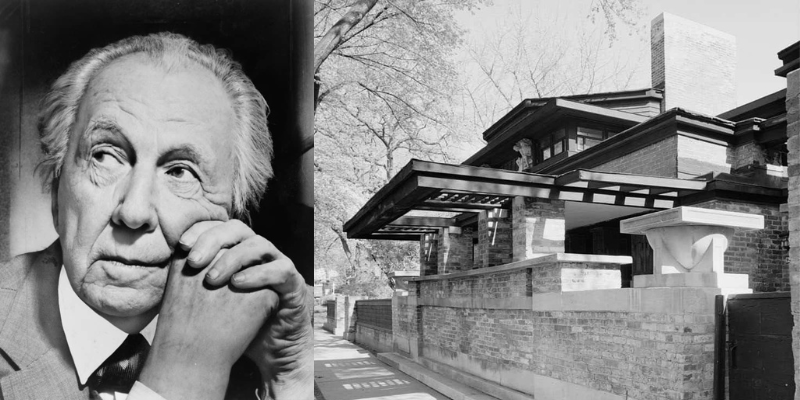Abhishek Dixit
“I don’t create a fantasy world; I create a reality of fantasy.”
Frank Lloyd Wright revolutionized American architecture throughout his impressive seven-decade-long career. An abundantly creative master of American architecture who was also a writer was born on June 8, 1867, in Wisconsin. The residential design in the United States during the 20th century was grounded on his “Prairie style”. During his developmental years, Wright resided in the Midwest and his professional journey would kick off in Chicago where he was employed as an architectural draftsman. It was in 1893 that he set up his own design studio.
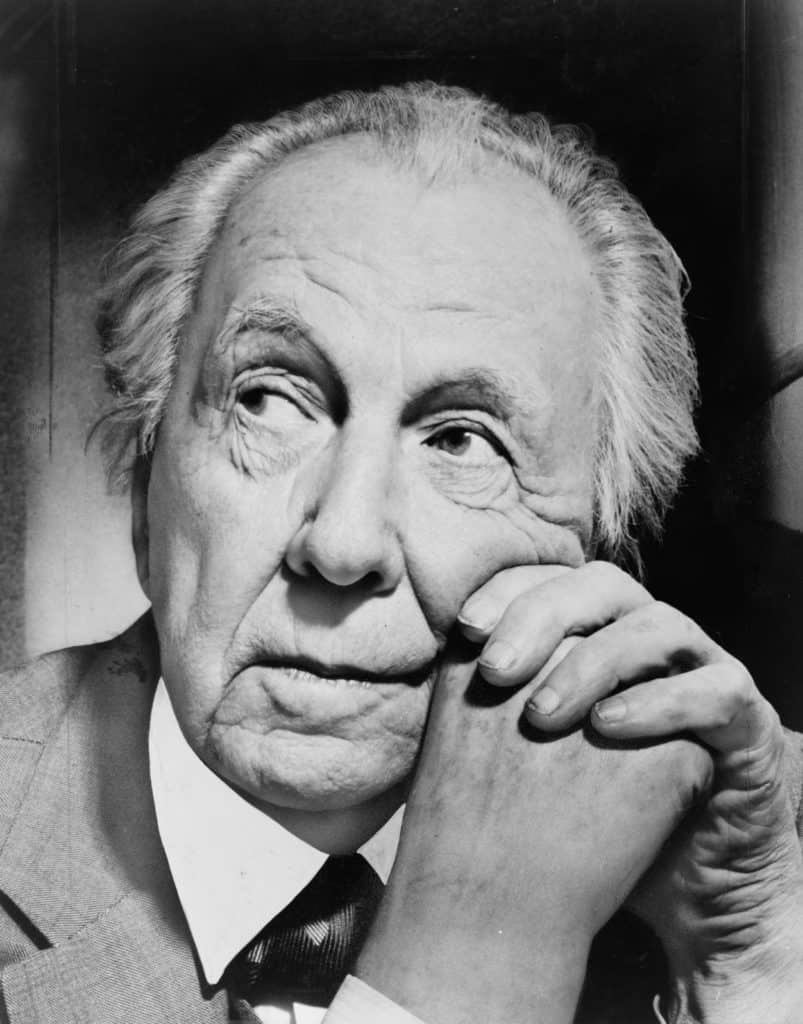 Frank Lloyd Wright, 1954 (Photo: Library of Congress) / Taliesin West, 1937.
Frank Lloyd Wright, 1954 (Photo: Library of Congress) / Taliesin West, 1937.
Wright emerged as a pioneer of the Prairie School trend, as demonstrated by the construction of his Prairie houses from 1900 to 1914. The Prairie School originated in the Midwest with the aim of creating an American architectural style that was completely independent of European influences. The features that embody this style include roofs with a low pitch, eaves that overhang, and a spacious layout. The buildings were designed to replicate the vast, level terrain of the adjacent prairie environment. Wright’s work started to give more importance to integrating the buildings with the environment, and natural materials such as wood and stone played a vital role in achieving this goal.
Throughout his professional journey, he conceptualized over 1,000 edifices, of which nearly 650 were successfully erected. He demonstrated remarkable productivity in his roles as an architect, interior designer, writer, and educator. To put it differently, he earned the prestigious title of “the greatest American architect of all time” from the American Institute of Architects back in 1991. Several of his constructions have been designated as UNESCO World Heritage sites, and he’s recognized for originating the inaugural American architecture style. Frank Lloyd Wright was convinced that natural architecture existed in the world, which took into account both aesthetics and practicality, without compromising either aspect. He recognized that houses, temples, and offices had the capacity for artistry and the creation of esteemed structures that were mindful and considerate of their surroundings, not just art.
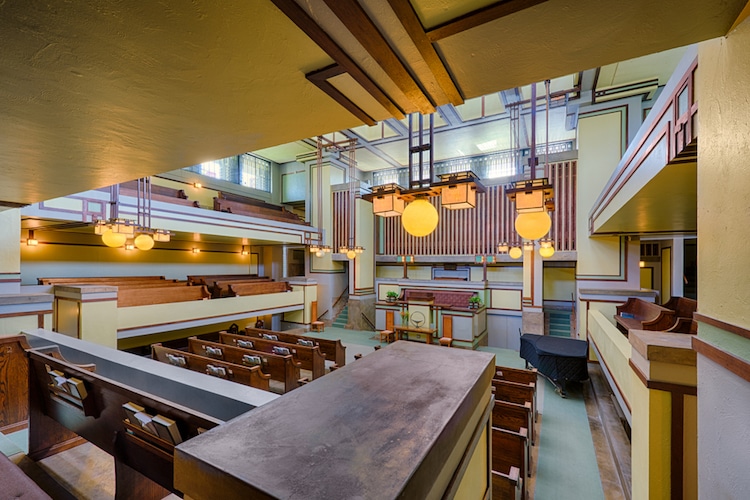 Unity Temple, 1905-1908. Oak Park, IL (Photo: Stock Photos from Nagel Photography/Shutterstock)
Unity Temple, 1905-1908. Oak Park, IL (Photo: Stock Photos from Nagel Photography/Shutterstock)
Although he didn’t finish high school at Madison High, he was able to gain admission to the University of Wisconsin in 1886 as a special student. During his time there, he attended civil engineering courses part-time for two semesters and became a member of the Phi Delta Theta fraternity. His peers recalled that during that time, he had a flamboyant fashion sense which consisted of sporting a top hat and cape and holding a walking stick. To augment his family’s earnings, Wright took up employment under the engineering dean, however, he wasn’t content with his predicament and found the unremarkable architecture in his surroundings disappointing. In his imagination, he envisioned Chicago as a city where magnificent edifices with unmatched architectural brilliance were being erected.
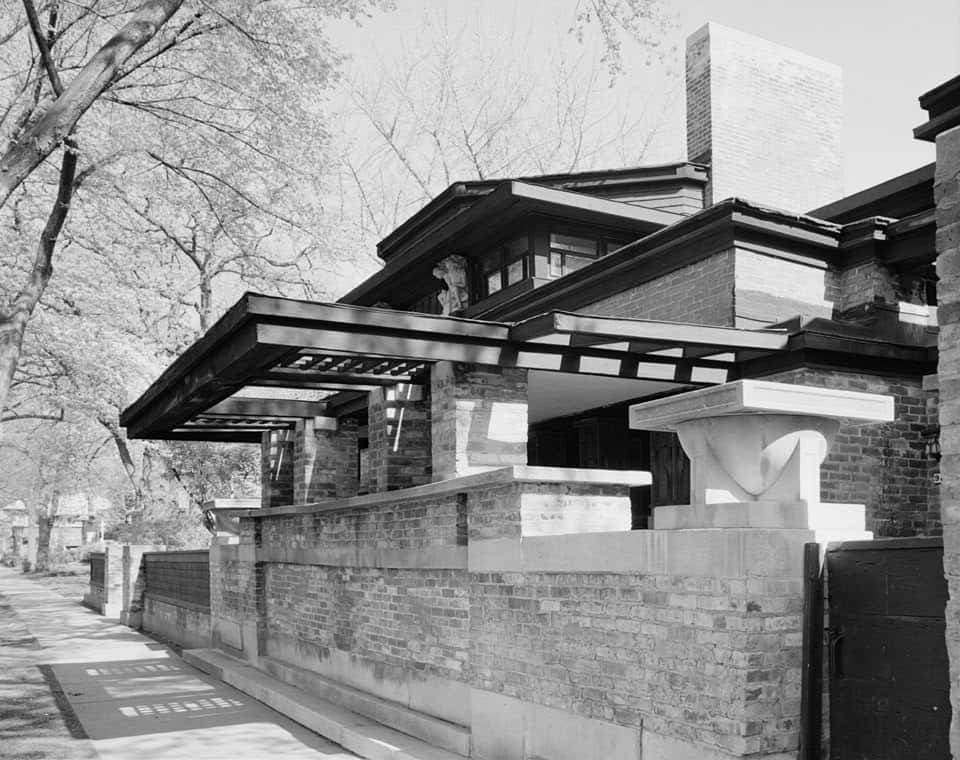 Frank Lloyd Wright’s Home and Studio, Oak Park, Illinois, 1889. (Photo: Artland)
Frank Lloyd Wright’s Home and Studio, Oak Park, Illinois, 1889. (Photo: Artland)
The Prairie School movement encapsulated a distinctly American spirit, drawing inspiration from the Arts and Crafts movement along with the philosophy of the Transcendentalists. Wright was a pioneer in the movement toward open floor plans, which involved breaking down traditional interior boundaries. He suggested that walls, ceilings, and floors be viewed as interconnected components that flow seamlessly into one another.
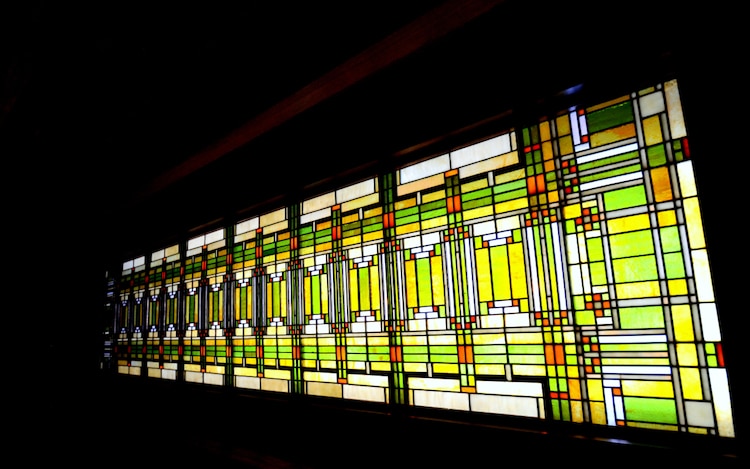 Prairie-style glass from Frank Lloyd Wright’s house in Oak Park. (Photo: The Chicago Files)
Prairie-style glass from Frank Lloyd Wright’s house in Oak Park. (Photo: The Chicago Files)
In Wright’s expansive Prairie homes, the design included broad eaves, roomy indoor spaces, lengthy windows, and uncomplicated, repeated geometric patterns. One of their most notable traits is their preference for unfinished materials and horizontal lines. During his time, Wright was a trailblazer who helped establish many of the architectural features that are now commonplace, resulting in an enduring influence on the aesthetic of that period.
 Fallingwater, 1936-1939. Mill Run, PA. (Photo: Carole B. Highsmith via Wikimedia Commons, Public domain)
Fallingwater, 1936-1939. Mill Run, PA. (Photo: Carole B. Highsmith via Wikimedia Commons, Public domain)
The epitome of Organic Architecture is represented by Fallingwater, which is Frank Lloyd Wright’s design for the Kaufmanns’ vacation home in Bear Run, Pennsylvania. It is regarded as the finest example of American architecture by the American Institute of Architects. Following WWII and upon reaching the age of 80, Wright devoted his attention to the creation of one of his most noteworthy works of art, namely the Guggenheim in New York. He invested 16 years of his time, commencing in 1943 until 1959, to construct the edifice. The design takes inspiration from organic architecture principles and utilizes the spiral form seen in seashells. Initially, there was disapproval towards the architecture. Wright aimed to create a museum that was as remarkable in its spatial layout as it was in the exhibits it contained, a concept that was once disputed but is now widely accepted. Initially, the creation faced critique and was mockingly labelled as a “washing machine,” a “imitation beehive,” and a “colossal commode” by its detractors. However, as time passed, Wright’s noteworthy project in New York became recognized as a revolutionary point in museum design, breaking away from conventional forms and ushering in the era of contemporary museums.
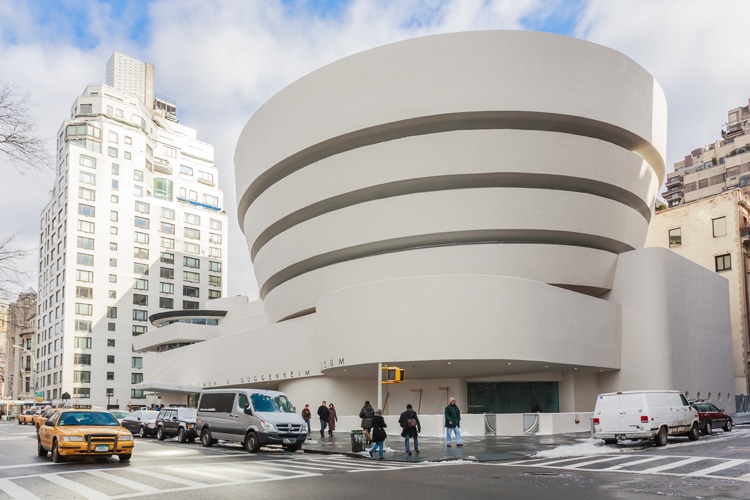 Solomon R. Guggenheim Museum, completed 1959. New York City, NY. (Photo: Stock Photos from Tinnaporn Sathapornnanont/Shutterstock)
Solomon R. Guggenheim Museum, completed 1959. New York City, NY. (Photo: Stock Photos from Tinnaporn Sathapornnanont/Shutterstock)
However, Wright’s personal impact and legacy are uncertain beyond that point. Wright initially embraced an architecture philosophy that supported democracy, but later developed a more elitist mindset and looked down upon the general public, famously labelling popular culture as the “mobocracy. ” His excessive ego frequently created obstacles in his personal relationships, including with those closest to him, and he held only a select few in equal regard. Wright faced difficulty in controlling his wants, and a considerable number of his biographers perceive him as a person who never matured and remained childlike.
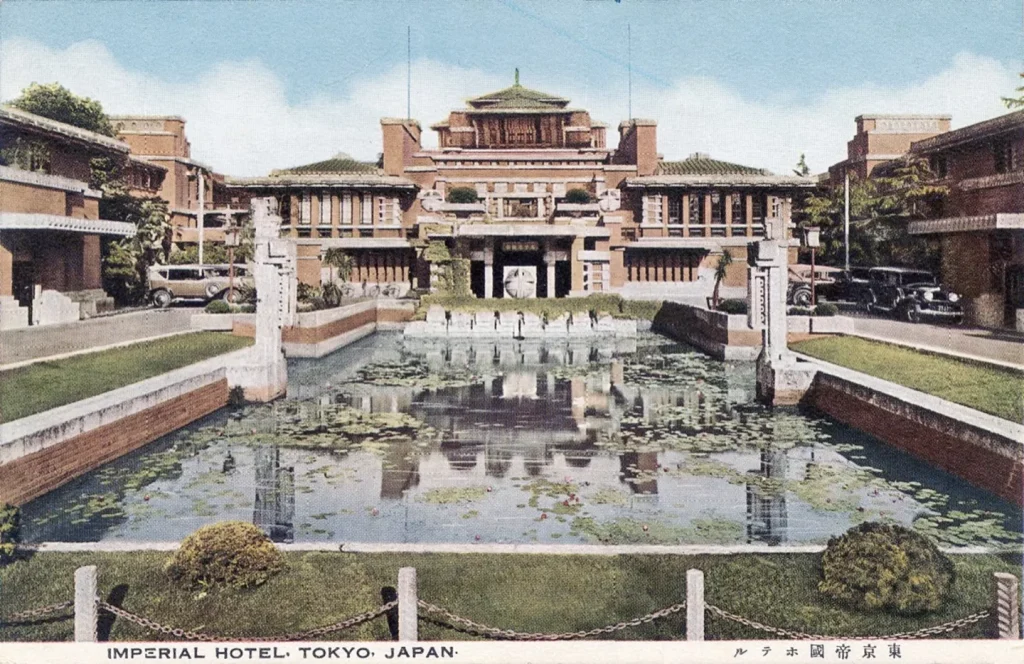 Illustration of the original Tokyo Imperial Hotel, 1930s–40s. Image via Wikimedia Commons.
Illustration of the original Tokyo Imperial Hotel, 1930s–40s. Image via Wikimedia Commons.
It can be contended that during his almost seventy years as an architect, Wright created over one thousand designs, and was highly respected and renowned as the most prominent American architect of the 20th century, with about half of those designs actualized. He possessed a comprehensive perspective that encompassed places of worship, personal residences and lodgings, as well as galleries, academic institutions, and workplace environments. From 1936 onwards, he developed “Usonian” housing designs to offer a cost-effective and feasible housing solution in the United States, and some of these homes remain standing to this day. In the current year, eight of his constructions were acknowledged by UNESCO for their significant contribution to the advancement of contemporary architectural design.

